|
There was a time when the quality of a restaurant wine list was judged primarily by the number of countries and regions represented, and therefore the larger the wine list, the better the rating. I recall lists that were encyclopedic in stature that went on for pages and pages, invariably starting with the classic regions of France - Champagne, Bordeaux, Burgundy, Rhone etc. and ending with a smattering of "New World" offerings that were added as an afterthought. The days when a restaurant can afford to maintain an inventory of that size have long been over and the best lists in my view, are the ones that work on a "less is more" philosophy where the skill lies in creating a selection based more on stylistic considerations than trying to encompass every region of the wine world. Recently I have seen some excellent examples of short lists that exemplify brevity in creative ways. A hotel restaurant I visited in Chicagoland has an all-American list that breaks out of the mold of offering only Napa cabs and chardonnays. The list is divided into sections based on styles and grape varieties and states such as Virginia, New York, Michigan, Arizona and New Mexico are included alongside the usual representations of California, Oregon and Washington. Cabernet Sauvignons are intermingled with Bordeaux blends and Meritage blends within a section called "Powerful Reds", and there is a delightful section of "Alsace grapes" within the whites, representing wines made from the likes of Pinot Gris, Gewurtztraminer, Riesling, Muscat, and Pinot Blanc. There are recommendations for which styles pair best with certain items on the menu and a large number are available by the glass or 500ml carafe (2/3 of a bottle, which is a very good size for a couple wanting a little more than a glass each but not needing a whole bottle). This method of presenting wines to the consumer does a wonderful job of combining the familiarity of grapes and styles with a modern and accessible way of encouraging experimentation. And the whole list is but a few pages long. There is really no excuse for a wine list to ever be out of date these days, with the ability to print beautiful full color pages on word processors and desktop publishing programs from any computer. Restaurants can keep their lists fresh and vibrant by frequently changing the selections, perhaps buying small quantities and gauging customer reaction before committing to purchasing more. Restaurant managers and sommeliers can experiment with different ways to present the wines and engage the customer by requesting feedback. They can monitor what sells and encourage experimentation by offering a large selection of wine by the glass. The best wines are not always the most expensive, a fact that consumers and restaurateurs are becoming more aware of in these hard economic times. Wine lists should be accessible, informative and fun to read. If they have a focused theme, so much the better as nobody has the time or inclination to wade through 100 pages, and few of us are impressed by the gargantuan choices of yesteryear. Before going to a restaurant, check out their wine list online. Small lists are actually harder to put together than long ones. If there is a fairly short, well thought out selection that is presented intelligently, it means the restaurant truly cares about its wines and you won't be disappointed. We returned from our epic journey almost three weeks ago and yet I have not been able to find the time to complete this blog until now, as it is has been completely manic since we got back on the house selling and job hunting fronts. However, the last day was as interesting as the others.
We left our very nice hotel near Sioux Falls, South Dakota and headed due east on Interstate 90, quickly crossing into Minnesota. I had looked for some Minnesota wineries that we might be able to visit en route that were not too far from the Interstate (this was going to be a 575 mile day and so we didn't have time for long detours) and located one near Rochester. Salem Glen Vineyard is a small farm winery that has been operating since 2007 making wines from cold-hardy variety grapes grown on property and around the region. There are no signs to it and you access the winery along a long, straight, dusty earth road. On Saturday afternoons, they often have live jazz in the tasting room (which opened in October 2009) and this beautiful, sunny Saturday afternoon there were a couple of dozen people enjoying the music and wine. If we had more time we would have stayed longer as the atmosphere was wonderful. Winemaker and owner, Dustin Ebert kindly took some time to show me around the winery, pointing out the astronomy observatory that is used as a logo on the wine label and explaining that he makes the wine in the garage attached to the house. A true 'garagiste". About 1/3 of his grapes are grown on property and the rest he purchases regionally, within a 120 mile radius. Varieties include Seyval Blanc, Edelweiss, Frontenac Gris, Marquette (that was developed at the University of Minnesota) and Marechal Foch which we also saw in Nebraska. Dustin is a self taught winemaker who is extremely passionate about the wines, making about 1000 cases per year. I asked him if he is particularly proud of any of his varietals. Currently, he really likes the Marquette and I was able to taste it with him. Well structured and balanced, the body is relatively light but the flavors are richer than I anticipated with aromas of cherry and a pleasing peppery finish. I was pleased to finish our trip at this beautiful little winery that epitomizes the philosophies of so many that we had visited in the 30 days we were away. Passion, individuality, experimentation and most of all a love of the land, and the vines that ultimately define the finished product. Wine should be for everyone and at Salem Glen, everyone is welcome. No pretence or stuffiness, just plain good fun! After a drive through Wisconsin Dells (which we had never visited in ten years and for which we felt a bit guilty that we had never taken our kids there during their visits) we arrived back at our newly-painted-soon-to-be-sold house in Sheboygan at about 9:30pm, tired, safe and elated at having completed this epic journey. As I reflect on the trip in which we traveled 7,500 miles, crossed 13 states and one Canadian province and visited dozens of wineries, I am in awe of several things. First, the sheer beauty of the different states and provinces. Each has an individuality and character that is unique and a personality that is distinct. It would be as impossible to pick a favorite state as it would be to pick a favorite wine. Certainly, drinking wine in the region in which it is made adds a whole different dimension to the enjoyment. Second, the variety of wines, the different personalities of the winemakers, the beauty of the areas in which they are made and the zest for life that is engendered by everyone involved in the winemaking world has left an indelible imprint on us both. Third, I am in awe of our little puppy, Hopi. Spending that amount of time in the car, going to different hotels and cottages all the time could have been unsettling, but he was a trooper and so well behaved. The world is gradually becoming more doggy friendly and it was great for us to be able to have him with us both. We are both so please we took the time and made the trip. I was able to continue the job search process and networking with the help of cell phone and WiFi connections and since returning I'm pleased to say that the job market appears to have brightened somewhat. There are several positions that I am pursuing in different parts of the country and with a little luck, one of them will come through and set us on our next adventure. Our house selling adventures are another story, and a bit of a roller coaster, having had one sale fall through. However that too will work itself out in time. Whatever happens we have the memories, blogs and photographs from our trip and have experienced something that we will hold close to our hearts for the rest of our lives. Don't forget to check out Ginnie's blog too For our penultimate day, we wanted to explore some of the places around Mount Rushmore before heading to our final overnight stop in Sioux Falls.
We had read a number of reviews of Mount Rushmore itself, some very positive (especially espousing the feelings of patriotism that are felt by Americans as they observe the 60' carvings of presidents' heads in the mountainside) and some rather negative, talking about the commercialism and "touristy" nature of the park. We had limited time as we had to make it to Sioux Falls and I also wanted to visit a winery in Hill City, so we opted to go to Crazy Horse rather than Mount Rushmore. And we were very pleased that we did. On the way there, I went in to what I thought was a winery, Stone Faces in Hill City. It turns out that this is not really a winery per se, but only a tasting room for another winery, Valiant Vineyards that is in Vermillion, SD, some 300 miles further east. The girl in the tasting room explained that the winemaker there, Eldon Nygaard was responsible for writing the law (The South Dakota Farm Winery Act) back in 1996 and established the first Farm Winery in the state there. Rather than taste the wines in Hill City, and knowing we were heading towards Sioux Falls, I said we would go there and visit. Unfortunately, I miscalculated the time we had available to fit everything in, and we never did make it to Valiant Vineyards, but I do plan to get hold of a bottle of their wine and taste it. We headed to Crazy Horse in weather that was still very iffy. Mist and drizzle persisted as we drove through the Black Hills, but gradually it improved and the sun came out. Ginnie has a particular interest in Native American culture, having written her first novel set in the Hopi and Navajo Lands of Arizona, so we were pleased to be able to see this monument, started by a white man and his family and funded entirely by private funds, to try to right some of the wrongs of the past in the way that the American Indians were treated. In comparison to the Presidential stone faces of Mount Rushmore, the scale of Crazy Horse is colossal. It is the world's largest mountain carving. The face of the sculpture is completed and the wife, Ruth, and children of the sculptor, Korczak Ziolkowski who started the carving in 1948 and died in 1982, are continuing the project. We were able to take Hopi into the visitor center as long as we held him. We went in to the theater to see the orientation video and scared the poor little guy half to death. He hates guns, bangs and explosions and the video shows in graphic detail how the sculpture is made by using a combination of high explosives to blow away huge chunks of the mountain, and heavy machinery. The project is incredible and you really have to see it to understand the scale. The visitor center is fascinating also and we spent a long time there. As we left Crazy Horse, we headed briefly through Rapid City and visited another winery, Prairie Berry, whose family have been making fruit, honey and berry wines in South Dakota since 1876. The Vojta Family came to South Dakota from Moravia and now the wines are being made by 5th Generation, Sandi Jojta. Many of the wines are fruit based (they are famous for a fun little number called Red Ass, which is made from rhubarb!) but I tried a few of the grape wines that were interesting and better than I expected. La Crescent 2009 was a semi-dry (or semi sweet depending on which way you look at it) white wine made from native grapes grown in South Dakota. The blush, called Pink Slip was mostly white Zinfandel (!) but the red Sand Creek was very good. Made with a blend of Cabernet Sauvignon and what they call River Grapes, this had fullness, a fine bouquet and hints of the oak in which it had been aged. At $21 a bottle, this is serious wine and was an unexpected pleasure from a state that in not perhaps noted for its winemaking prowess. Our journey continued along Interstate 90 and we arrived late at out final hotel, a very nice Homewood Suites in Sioux City where we were able to order a good steak for delivery to the room. We opened a bottle of wine and tried to take in the fact the the next day would be the last one of our trip and that we would soon be back in Wisconsin. Following our inauspicious stay in Moses Lake, Washington, we had a fairly short drive to Walla Walla. I had been looking forward to visiting this area for a long time as it is a very up and coming wine region and one that has been drawing international attention for a number of years now. Prize winning wines and winemakers have hailed from the area and press has been drawing attention to it. The Walla Walla Wine Alliance has been doing a good job of promoting the region, which actually extends across two states, Washington and Oregon.
As has been our pattern throughout the trip, we did not make reservations in advance but it was a good thing that we decided to book something before leaving Moses Lake as Walla Walla was extremely busy this weekend and we were fortunate to get the last room at a Holiday Inn Express. The landscape became more attractive as we left the Columbia Basin, but I have to admit to not finding the area as pretty as many other wine country regions. Perhaps it was the contrast to the Okanagan but it does not compare in natural beauty to there or Califonia. We have been fortunate to visit many beautiful areas during this trip and I suppose it is natural to make comparisons, but we were a little disappointed. When we think about it, however, it is just because of the geology. The area has the world’s largest lava flows, and that, combined with glacial flood deposits and a very favorable climate, contribute to great grape growing conditions. Wineries began to appear along Highway 12 as we approached the town of Walla Walla. Vineyards, however, seemed conspicuous by their absence and it seems that many wineries in the area buy wines from half a dozen vineyards in the region and that the Estate Wineries (those who grow their own grapes) are relatively few. We stopped at Reininger along the way. They buy their fruit from several of the better vineyards including Pepper Bridge, Seven Hills and Spring Valley as well as from Ash Hollow Vineyard that they bought with some partners back in 1999. Their portfolio includes two labels, Reininger and Helix by Reininger and they make a wide range of wines from Chardonnay to Syrah, Malbec , Carmenère and Cabernet Sauvignon. Although my dislike of wine ratings is well known, Wine Spectator and Robert Parker have rated many of their wines in the 90s. What this really means is that they are very good, very well made and with a focus on the varietal that is true and straight. I tasted the 2007 Carmenère, a grape that was originally in the Bordeaux blend but that has found a new home in Chile where they make some superb examples alongside Malbec. The Reininger offering made with grapes from the Seven Hills Vineyard was full of red, strawberry fruit that also has a depth of flavor more reminiscent of blackcurrants and a peppery note that was enchanting. After checking into the hotel (early for once) we headed out to find some more wineries. I was attracted to one, Beresan that is a small producer of handcrafted wines, owned and operated by Tom Waliser and his family. They have 18 acres of estate vineyards and produce high quality examples of cabernet Sauvignon, Cabernet Franc, Syrah and Merlot in addition to a fine Semillon. However, I was most interested in the their Carmanère, as they were the first to produce a wine from that grape in the Walla Walla Valley. Having tasted the Reininger example earlier it was good to compare the two. They both share the characteristics of the grape but are completely different profiles with the Beresan being a little more powerful and aromatic, but ironically with less tannin. The pepperiness was still evident and it is a beautifully made wine by a grower with a great local reputation. As time was going on, we headed to the newest winery in the region, Castillo Feliciana, set in a beautiful location, surrounded by wines and fields of grain with a tasting room inspired by Southern Spanish Andalucía architecture. The owners are Sam and Deborah Castillo. Feliciana was Deborah’s great aunt and she showed me a photo of her. Deborah’s interest in wine was sparked by memories of going into her great aunt’s purse in search of gum, and being reminded of the smell of leather, roses (from her perfume), slight mustiness and the smell of the gum. The name of the winery means “Castle of Happiess” and that was certainly the feeling I got when visiting. Sam is a Seattle dentist and they made the decision to go into the wine making business right at the wrong time, as the economy dived in late 2008. Sam had hoped to sell the dental practice but that fell through. Consequently, all funding for he winery has come from their personal savings so this is a huge leap of faith that they hope to hand on to future generations. Retirement is not a slowing down for Sam and Deborah! However the wines are top quality and they certainly deserve to succeed. They have concentrated on Spanish and South American varieties and the Tempranillo is their signature wine. Very complex on the nose and palate, it has aromas of mint, spice and blackberries. The mouth-feel was delightful and the finish long and multidimensional. It would be a perfect accompaniment to tapas! Feeling rather hungry after this, we headed to the town of Walla Walla and were delighted to find a winery, Sapolil Cellars, who also serve great bistro food and have an outdoor patio for Hopi. The weather was perfect, the house wine delicious and the food excellent. To top it off, a pianist played and the place filled with punters who were on wine trips and basically calling on every winery in town. Great atmosphere and a wonderful end to our Washington trip! There is something about the combination of lakes, mountains and vineyards that stirs me more than almost any other landscape on earth. Maybe it is because of the experiences I have had in Switzerland and Italy and memories of vacations on Lake Maggiore or the time I spend in Lausanne, overlooking Lake Geneva. Although I love Lake Michigan too, it is more like looking out over an ocean than a lake, it is so big. I like to be able to see mountains on the other side silhouetted against the sky as the sun disappears behind them and is replaced by thousands of lights reflecting off the surface of the water. Lake Okanagan is the first place in North America that reminds me of the Swiss lakes, On Tuesday we saw it in its full glory and I fell in love. We drove from our cottage just south of Penticton and headed up the east side of Lake Okanagan to the Naramata Bench, a wine growing area of great distinction. First port of call was Township 7 winery where I met with owner, Mike Raffan and winemaker Brad Cooper. Mike was originally a successful restaurateur who owned restaurants in Vancouver but since his early 20s had wanted to own a vineyard. He was finally able to purchase township 7 in 2006 and has created a boutique label with a sister winery in Langley. Brad, the winemaker, learned his trade at the local college and honed it with time in Hawkes Bay, New Zealand and Washington State. When I asked him about his style, predictably he says that he wants to create a style of wine that is true to the region and not try to emulate European or New World although in reality, he draws from both of those styles to create wines that are truly unique. I had tasted the 2009 Sauvignon Blanc the day before at dinner and was remarkably impressed with it. Full-on fruit with a gorgeous, Pouilly Fume-style nose that had bracing acidity yet balanced structure and a long finish showed that this was a wine of great character. On Tuesday they were bottling the 2010 and I tasted it right from the bottling line. This is from the same pedigree but evidently needs time to settle and "calm down" as at that point it seemed a tad too acidic. They, and everyone else in the valley had challenges in the last two vintages and 2011 is also very much behind where they would like to be because of cool, wet weather. The 2007 Merlot that I enjoyed later that day is also a very well made wine that again has influences from Right Bank and New World that provide a personality that is unique. Red fruits and a hint of pepper and spice, but not too much make it a perfect food wine and all of Township 7's portfolio is commendable. With prices in Canada being considerably more than the equivalent in USA, their wines are also good value. Owing to some complicated and archaic liquor laws, distribution is a challenge for all Canadian winemakers (a theme we heard repeated many times) and so you are unlikely to find the wine outside of British Columbia which is a shame. However, search it out if you visit as they are distinguished wines that deserve a wider audience. Further along the Bench is Red Rooster, a winery that looks grander and is larger in scope than many of the other 100 wineries that dot the Okanagan landscape, but is actually still relatively small. The original Swiss owners, Beat and Prudence Mahrer who opened it in 1990 and produced their first vintage in 1997, now own Ruby Tuesday's next door (see below). They recently sold Red Rooster to Andrew Peller and a young local winemaker, Karen Gillis is at the helm producing some fine wines that have won international acclaim. The winery is quirky and features unusual art as well as having incredible views up the valley to the Okanagan Lake. The Marhers, the Swiss couple from Basel, opened Ruby Tuesday Winery in 2009 after selling Red Rooster to Peller and having to wait until the non-compete agreement expired! Ironically, the name Ruby Tuesday, which is from the Rolling Stones song and used with their full consent, has had to be changed because the USA restaurant chain with the same name took umbrage and complained. So it will soon be changing to Ruby Blues. Regardless, it is the wines that matter, and we tasted whites and reds that are absolutely stunning! All of the wines have finesse and great character, and I don't now whether it is because we were tasting them against the backdrop of the amazing Okanagan Lake in their tiny tasting room, with the sun sparkling off the water, but I was entranced with every one of their offerings. I have detailed tasting notes that will be included in the book that we hope to have published following this trip, but at suffice it to say that at this point I am bowled over by the quality. After buying some Ruby Tuesday wine to take to our dinner hosts, we picnicked on the banks of the lake and breathed in the views. Dinner with step-son's girlfriend's aunt and uncle (!) was at their cottage on the lake. As we sat on the patio and watched the lake and mountains, Ginnie and I dreamed of having our own place here. Such is the magic of the region, the wines and the people who fill it with hospitality and sunshine. You never know what you are going to find or whom you are going to meet when you set off on a wine adventure. Today was one of exploration and discovery and turned out to be extremely fulfilling, despite the damp Oregonian weather that has encompassed the region.
Oregon is best known for wines from several distinct areas, most of which either run north to south between the Coastal Range and the Cascade mountains, such as the Willamette and Umpqua Valleys, or at the north of the state running along Columbia Valley sharing the Washington border. Our hotel is right on the coast, as we wanted to see the dramatic beaches, coves and unspoiled beauty that I have often seen in photographs. The fact is, that grapes just don’t grow along this coastline. It is too cold and wet for them to reach maturity and ripen enough to create viable wine juice, however there is one winery that does make the wine right on the coast, albeit from grapes grown in other parts of the state. That winery is called Flying Dutchman and located 19 miles south of Lincoln City, on a rock promontory that sticks out into the Pacific, high above a natural rock formation called The Devil’s Punchbowl. In fact, this is the most western winery in USA and I met with Assistant Winemaker, Dan High who led me through a tasting and explained the wines to me. Their distribution is tiny and all of it is sold out of the winery but if you call them, they will ship bottles for personal consumption to any state. They buy grapes from 5 notable vineyards in central and south Oregon and are going through the pressing and fermenting process for the entire month of October. The reds are fermented outside in open-top fermenters where they claim that the salt spray from the ocean acts as a natural flavor enhancer and preservative, allowing them to use very little sulphur (the lowest in the state). The salt also apparently helps with color extraction and the slow cold-soak adds complexity to the mix. Following fermentation, Dan or Winemaker Richard Cutler put the reds in oak barrels for aging (combination of French and Hungarian oak, mostly about 2 years old) and the finished wine is not bottled for several years. They are able to be patient and let the wine age a little before release. While these wines are not necessarily representative of the rest of the state, they are certainly serious products that have won many medals at State level competitions. The prices are reasonable too and there is no sales tax in Oregon. I loved the 2007 Cabernet Sauvignon, a grape variety that is not immediately associated with Oregon. It didn’t have the power of a California cab, and it is not trying to be one. It is a great food wine with structure and soft tannins, no noticeable greenness and full black-fruit flavors. I also tried the 2004 Pinot Noir. My favorite grape of all is a hard one to grow and yet it does well in Oregon with the right handling. This example is soft and delicious. A very feminine wine stylistically that I would think many American palates would find too thin. Not too vegetal on the nose, but distinctively a Pinot Noir. I brought home a bottle of Pinot Blanc/Riesling blend having tasted it at the winery. Perfect with the seafood that is so abundant here. As I drove back north to the hotel, I stopped at a lookout to photograph the promontory on which Flying Dutchman Winery is situated and you get an even better impression from that vantage point. A few miles later, I was driving through the seaside town of Depoe Bay when I saw a “Winery” sign. I stopped to explore. The tasting room is quaint to say the least, so small that it doesn’t even have room for a fridge to chill the whites, and the ceiling is covered with dollar bills that have been signed by the many tourists who have come in and tasted the wines. Depoe Bay Winery is actually a sister tasting room for Nehalem Bay Winery, further north. Laura, the hostess in charge for the day was delightful. She usually works at the other tasting room and lives in Portland and so was not as familiar with this area, but she talked me through the wines and told me the story of the winery. The owner and winemaker is Ray Shackelford who bought the winery in 1991 after a chance meeting with the original owner in a bar. Ray is an interesting guy who is in Cambodia at the moment working in an orphanage. But his passion for wine is evident in their offerings that include many varietals and some blends as well as fruit wines. Just like Flying Dutchman, Depoe bay Winery only sells the wines from the tasting rooms. They are not even available in restaurants, which I think is a shame. Come on local restaurants, support the wineries that are literally up the road from you and offer your patrons the opportunity to buy a bottle with your fantastic seafood! Finally this evening, we decided to check out a place that looked fun. It is a wine bar/art gallery in Lincoln City called Wine 101. After getting yelled at by a particularly ungracious owner of an adjacent store for parking in “her” parking space (although there were no signs to this effect), we went into the wine bar that was abuzz with patrons of our age, all enjoying conversation, wine and music from a gifted guitarist. The host, Lee Gray, turned out to be a real character and as we got to know him, we found out that he is quite a celebrity himself. Wearing a black apron and a black beret, Lee wears his hair in a braid that goes to his waist. He smiles with one missing tooth and is just as congenial a host as you could ever wish for. Another patron showed us into an adjoining wine cellar where we were invited to buy any bottle to be served at the bar. These bottles were all at retail pricing and there was a great selection, not only from Oregon but also California and Europe, with prices staring as low as $12 a bottle. We picked a bottle of 2009 Bruno Pinot Noir from Willamette Valley that at $17 was a bargain, took it to the bar where Lee opened it and brought complimentary homemade herb bread and an amazing dip of hempseed and roasted red peppers. We also ordered an appetizer of baked Brie with Dungeness crab and nettles. Lee had run out of nettles but had made it with wild watercress instead. It was delicious! On a TV behind us, a video was being played of a Canadian Food Network show about foraging for wild mushrooms; the star of the show, none other than our host, Lee. Turns out that Lee (whose birthday was yesterday like mine, although he is 10 years older) is a gourmet chef who specializes in finding and growing unusual, wild food. He learned that skill in the 80s when he decided to live in a sea cave. In addition to being a wild mushroom authority, he knows a lot about shellfish, herbs, seaweeds and things like ferns. On the bar were jars of his own pickled kelp and fiddlehead ferns, which I tried. On their own they are an acquired taste, but I could imagine them with a plate of antipasti and they would be great. We finished with rum-chocolate filled strawberries and drank our pinot, chatting to locals and people from further away. In addition to being a chef, TV personality, wine bar tender and host, Lee is also an artist. His work is displayed in another back room and is very eclectic, ranging from pencil drawings, (mostly nudes) to sculptures (mostly female forms) made with glass and found pennies and to Native American style ceremonial weapons. Lee is one fascinating guy! Every person there had his or her story and this was a wonderful experience. We smiled the whole time. Everyone made us so welcome and as we said goodbye, Lee hugged us both. This was definitely one of the human highlights of the trip and one that we will remember a long time. Although one of the missions of this journey is to highlight wineries and winemakers who are often overlooked by the wine consumer, it is impossible to ignore the area that is synonymous with American winemaking, Napa Valley, I have been fortunate to visit this region many times over the last ten years and I have had the privilege of touring many of the wineries, large and small, often visiting with the winemakers and hosting several of them for wine dinners at Riverbend and during the Kohler Food and Wine Experiences held every October.
So in returning to Napa I wanted to take a slightly different approach and explore the old and the new, and find out what has changed and what has stayed the same in this historic region. What better place to start, therefore, than Napa Valley's first winery, Charles Krug, which was established in 1861? It is named after the Prussian immigrant who was likely the first European to recognize the potential of Napa Valley for growing grapes, and was acquired 67 years ago by the family whose name is, and probably will always be associated with American wines, Mondavi. Peter Sr. and Robert Mondavi are the sons of Cesare Mondavi who was an Italian immigrant and purchased the Charles Krug Winery in 1943. The brothers worked at the winery, Peter as Vice President and Robert as GM until a bitter and well publicized feud split them apart, with Robert leaving the company and setting up his own winery down the valley, ostensibly out of spite. The family divisions have continued in some form to this day, but Charles Krug Winery is still very much controlled by the Peter Mondavi family (Peter Senior is in his 90s, Robert died in 2008), with Peter's sons Marc and Peter Jr. both taking active roles in its ongoing development and direction. In 2000, they embarked on a 10-year program to replant most of the vineyards they own (about 850 acres) and they have embraced the concepts of sustainable farming, following their grandfather's philosophy that if you treat the wine with respect it will show in the wine. I was lucky to taste many of the current releases of Charles Krug yesterday, guided by Candace and Jim at the lovely, understated (by Napa standards) tasting room at the winery in St. Helena. I elected to taste only the wines that are available for general release, although they also have some reserve selections that are only available at the winery to visitors. Marc Mondavi was a presenter at last year's Kohler Food and Wine Experience and although I had an opportunity to meet with him, I was unable to attend the seminar he conducted. So the wines were quite a revelation! From 2010 Sauvignon Blanc and 2007 Zinfandel (there it is again!) made with grapes grown right at the winery, to 2009 Chardonnay and 2008 Pinot Noir from Carneros fruit, to the deeply rich, smoky 2008 Caberbet Sauvignon (made from Napa grapes) and red-fruit dominated Merot and finally the beguiling 2008 "Generations" a Bordeaux-style blend that is created and approved each year by "the family", these wines are indeed worthy of the heritage that the Mondavi family has created and the history that it has imparted in The Valley. From the old, I moved to the new. Along Route 29, on the west side of the valley, lies so many wineries that it is almost intoxicating in itself. But I noticed a name that is relatively new and that I had not visited before, Alpha Omega. Only 5 years old, this is one of Napa's newest boutique wineries. It is a partnership between owners Robin Baggett (who also owns Tolosa Winery in San Luis Obispo) and Eric Sklar (a Napa grower with 30 years experience), together with Jean Hoefliger, a Swiss who has made wines for such exalted names as Bordeaux Chateau Lynch-Bages and Chateau Carbonnieux and South Africa's Meerlust, and renowned wine consultant/superstar, Frenchman, Michel Rolland. This unlikely menage a quatre is creating wines that are quite simply spectacular! I tasted four as part of their regular winery offering. The 2010 (new vintage) Sauvignon Blanc is made from grapes right outside the winery. These are the only grapes that actually are grown here as the flat valley was described to me as being almost like a swamp - not good for other grapes, but excellent for Sauvignon Blanc. The wine is an entrancing combination of Bordeaux-style SB, with roundness and fruit, combined with the higher acidity you would find in a Sancerre or a New Zealand example. Wonderful wine. The 2008 Cabernet Sauvignon is a special wine, but at $84 a bottle it should be. It has highly extracted fruit, soft tannins and heady aromas that would be wonderful with red meats or game. The 2007 Proprietary Red is, to my palate, even more refined, but no less expensive at $86 per bottle. The company's tasting notes mention "black currant, oak, pine, milk chocolate, cigar box, raspberry, blueberry and jasmine with touches of rosemary and chalk" Wow! Honestly, these are the kind of things that put wine tasters off. How can all those aromas be present in ONE wine? Personally I think it is a little silly, however I do smell the characteristic cigar-box and some blackcurrant. After the official tasting, the personable representative took me into the cellar to taste their signature wine, 2008 Era (a Bordeaux style blend) right from the cask. He dipped the wine thief into the hole at the top of the French Oak barrel and brought out some of this extraordinary wine. Words simply cannot describe it, so I will not try. I will simply say that when it is released in boxes of three bottles, it will be $450 per pack, but I actually think it is worth it. Remarkable wine, and only available in very limited quantities.Napa Valley is a special place. Not only did I taste incredible wines, just like I have done every other visit, but we had a great lunch in Yountville at Bistro Jeanty where our pooch was made to feel very welcome on the patio and provided a tasty marrow bone to lick and suck, while I had the best Salade Nicoise I have had in decades. Another fantastic day. Definitely more fun than working! The wine growing region of Paso Robles is one of hottest in California with a long growing season and cooler evenings that ripen the grapes and create full flavored wines. There are about 26,000 acres under vine and they produce more than 40 varieties including Spanish, Italian, Rhone, Bordeaux and of course the one most famous in this area, Zinfandel. In less than 20 years, the region has grown from about 20 wineries to over 250.
The region appears to be a little fickle in some ways, with growers following trends and occasionally paying for that as they find the trends changing. Planting vineyards takes time and you have to wait several years to be able to reap the rewards. If a trend has changed in that time, a winemaker can find him or herself struggling to keep up. Trends can be influenced by newspaper articles, such as the famous New York Times one that heralded the 1997 Napa cabernets such that the prices rose ridiculously and nobody could then even GIVE away the 1998, even though many were better than 1997. Or the reason can be as banal as a movie which was the case here in the Central Coast after the release of Sideways. Prior to the movie, growers had planted merlot vines in huge numbers, but after the movie denigrated that grape, winemakers had a hard time selling it! Such is the power of the media. One grower who has not followed trends but has attempted to cut his own path, is Lee Nesbitt of Chumeia. Lee's winery name means "alchemy" in Greek - the process of turning something abundant into something valuable, and that is exactly what he has done with his grapes. His story is fascinating and you can read it here, but I was most impressed with his philosophy that wine is really grown, not made, and that he tries to let the fruit speak for itself and use oak "as a giant spice rack" . His wine interests now extend beyond Paso Robles to other parts of California and also into Argentina. Another reason we liked his winery is that it is dog and pet friendly. Hopi met his first cat who was lying on the tasting room counter, oblivious to everything! Lee showed me several of his wonderful wines. The 09 Chardonnay is from Monterey fruit but delicate and fresh, very light on the oak and delicious. The 2007 Partridge-Leigh Barbera was absolutely wonderful. Full, balanced, mouth filling yet still gentle on the tannins. An incredible food wine from a great vintage. The 2009 Cabernet Sauvignon was also excellent and then in the corner of my eye, I saw the Zinfandel lurking. I admitted to Lee that I do not usually enjoy Zinafandel. I find it too single-dimensional, too alcoholic and jammy. He smiled and asked me to taste his. What a revelation! Layers of flavor, full yet not overpowering, lingering yet not cloying, peppery but not too much. I absolutely loved it and almost for the first time in my career, I actually ENJOYED a Zin! On we went and headed off the main highways to dusty back roads. We ventured to L'Aventure Winery, whose wines are made by Frenchman Stephan Asseo, who studied winemaking in Burgundy and then made wine in St Emilion, Bordeaux. His dream was to own his own winery and make blends thant he was not allowed to make in France. His hunt for a suitable vineyard took him all over the world, to Lebanon, South Africa and Napa. None of the hillsides he wanted were available in Napa and so he went to Santa Barbara. He found that climate too cool for what he wanted to do and then he was advised to chek out Paso. He had no knowledge of the area but fell in love with it. Now he makes wines with blends from the Rhone and Bordeaux and with huge success. I tasted several that were quite remarkable and that have received great critical acclaim. The 2010 Estate Rose was being poured for the first time this weekend and may be one of the best roses I have ever tasted. Bravo to Stephan and his team for their adventure! After a picnic in Peach Canyon's vineyard with a glass of Viognier, we found another small, family owned winery, Grey Wolf. Unusually for this area they make some great white wines which I tasted. The Sauvignon Blanc was a surprise and had slight citrus tones and bright acidity. Joe and Shirlene Barton have converted a 50-year old farmhouse into a tasting room and it is a delight. Well worth a visit for some relief from the big reds when in this region. Finally we ended up at the house of some dear friends, Kelly and Gregg Wangard. Kelly was the chef at Riverbend when we opened in 2001 and her husband is also a chef. Kelly is originally from Paso but Gregg is a Wisconsinite. We had a wonderful afternoon in their garden with them and their two gorgeous children, Elle (who shares a birthday with me on Thursday) and son, Mason. Their Labrador, Libby, played with Hopi, the wine flowed, the beer flowed and, as you would expect with a family of chefs, we had great food too. Oh and an early birthday cake for Elle and me! Such fun times!! And to top it off, we heard the news about Osama Bin Laden's demise. Now on to Napa! One of the aims of this trip was to highlight winemakers and wineries outside of the areas that one tends to think of first when we talk about American wine. If you ask most people which state they would associate the most with wine, they would likely answer, California, and of course they would be right. California has more wineries than any other state and produces more wine grapes. In 2009, California produced over 600 million gallons of wine, amounting to 89% of the total US production. Interestingly, the next largest producing state is New York, which produced 3.7%. California is without doubt an animal unto itself where USA wines are concerned.
So now our travels have taken us all the way to the West Coast and we are staying a couple of days in the Central Coast region of California. Broadly, this is the area between Los Angeles and San Francisco and encompasses such areas as Santa Barbara, San Luis Obispo, Paso Robles and Monterey (amongst many others). This is my first time visiting the region. Scenically it is beautiful; rolling hills, lush vegetation and a mild climate all year round. Today, 30th April, the temperatures were in the upper 60s and lower 70s inland, although there was quite a wind that picked up late afternoon. We didn't have appointments to visit wineries in the area, and as it is a weekend, the wineries were busy with visitors all wanting to taste and purchase. So my approach today was a little different. I decided that I wanted to get a feel for the region of San Luis Opispo, Edna Valley and Arroyo Grande. I have always believed that visiting a wine-growing region is the very best way to gain an understanding of the wines, and getting a feel for the geography is important. From just driving around, you can gain an understanding of which wineries are bigger and those that are smaller, which are more commercial and which less so. It is probably wrong to make judgements based on these factors, but I often find that my initial hunches are borne out at later tastings. I was only able to actually visit and taste at one winery today, Baileyana. I realy wanted to go there as the winemaker, Christian Roguenant, is a Burgundian who makes Pinot Noirs and Chardonnays in the Burgundy tradition. The tasting room is in a 100 year old converted schoolhouse in the hills above San Luis Obispo and is delightful. There is an outdoor patio and families were enjoying sipping wine while their kids played petanque. Very French! I wasn't able to taste the wines I wanted to because of time, but was able to sample a glass of Pinot Gris which was firm, fruity and refreshing. Perfect, unpretentious quaffing wine for a summer (or in this case, Spring) afternoon. Most wineries in this area are growing grapes according to sustainable farming practices which is commendable. We also managed to see Wolff Vineyards, Tolosa (which appeared to be quite big), Tangent, Sextant and Saucelito Canyon who have the misfortune to specialize in Zinfandels, my least favorite grape of al! We weren't able to take Hopi into any of the tasting rooms and so our tastings of most of these wines will be at a later date. We do, however, have a greater understanding and respect for the "terroir", the areas where the grapes are grown, where the wine is ultimately born and develops its character. We were able to spend some time in the delightful town of San Luis Obispo (shortened to SLO in everything - SLO Wine, SLO Food etc.) where we enjoyed lunch on the patio of a lovely sandwich shop, The Nautical Bean, and then take Hopi for a run on the beach at Morro Bay. Tomorrow we will taste in Paso Robles and then meet up with some old friends and colleagues in the afternoon. Fun times! |
AuthorStephen Beaumont CWE Archives
September 2014
Categories
All
|
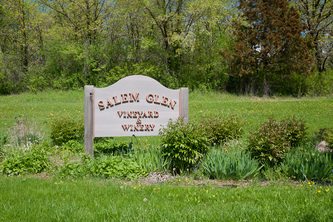
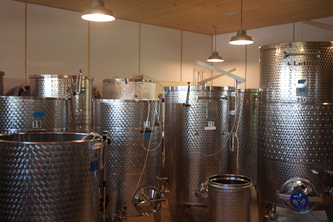
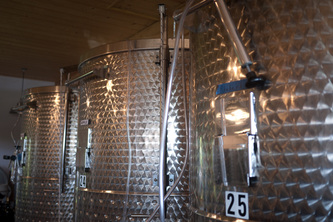

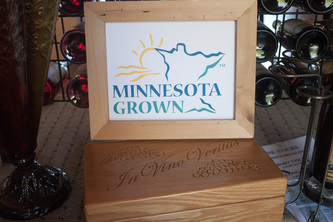
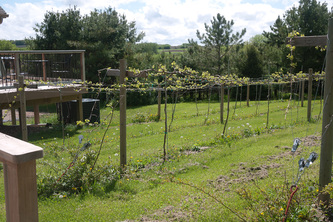
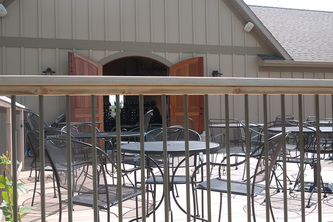
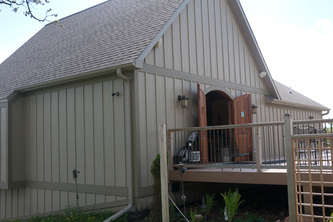
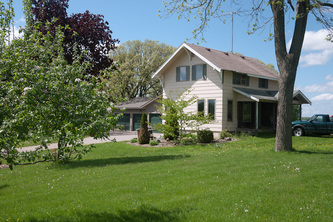
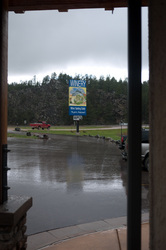
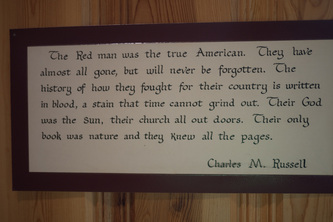
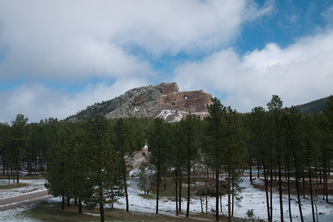
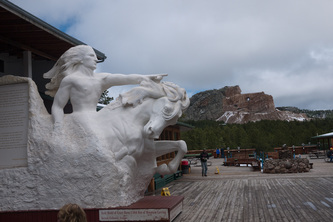
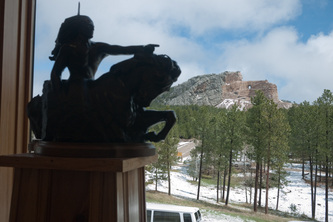
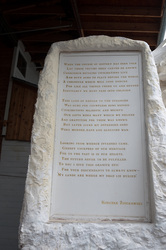
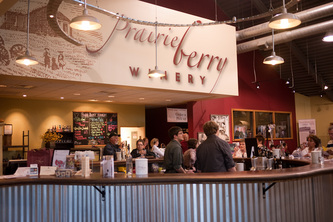
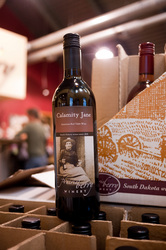
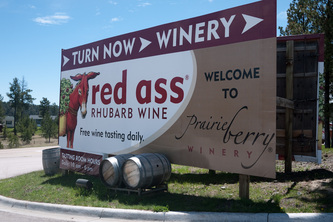
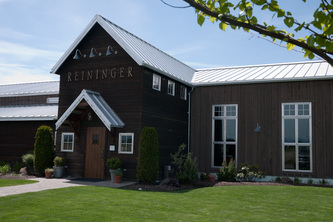
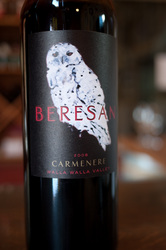
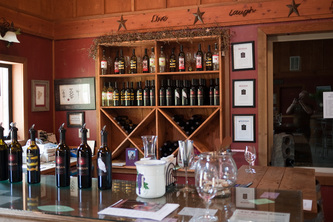
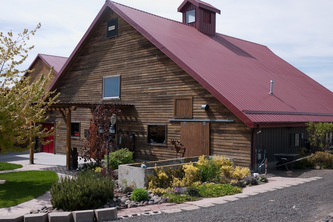
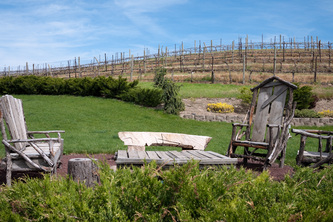
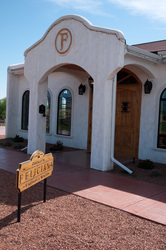
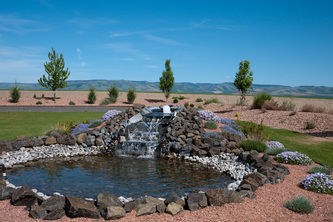
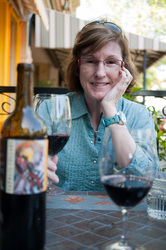
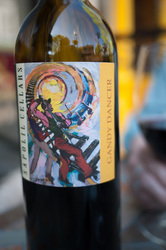
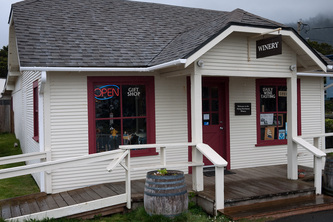
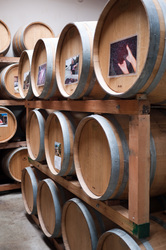

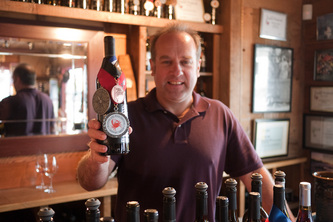
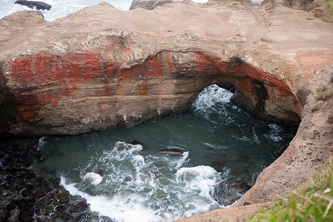
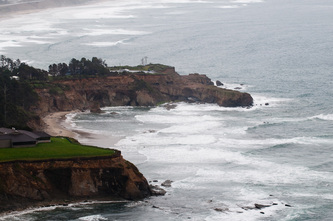
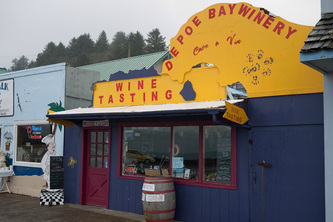
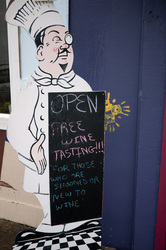
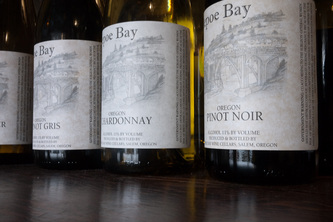
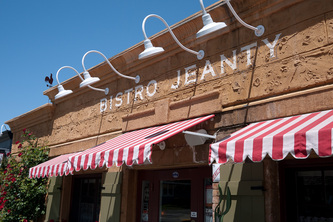
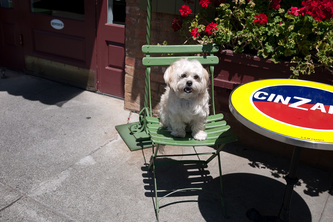
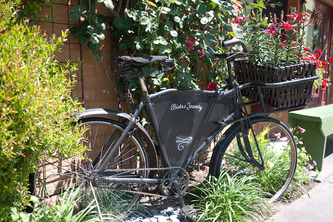
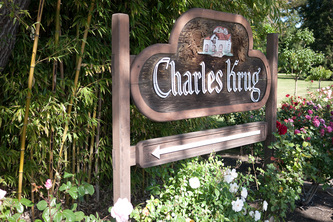
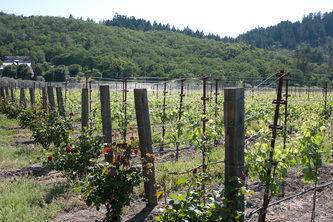
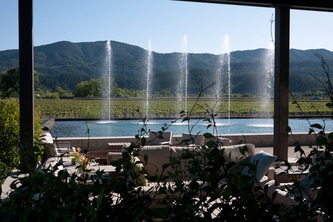
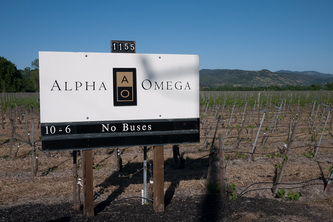
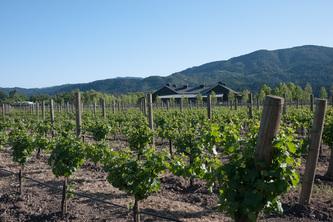
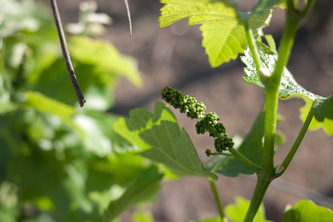
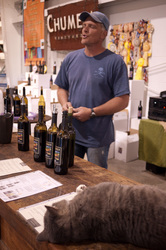
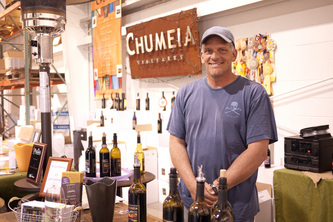
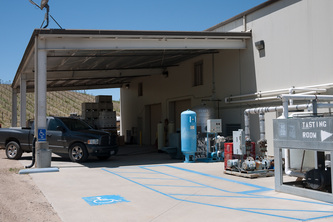
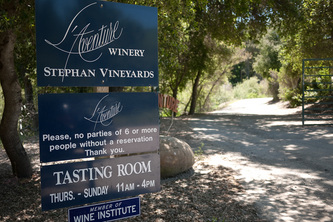
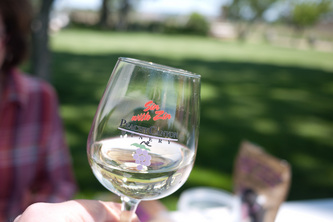
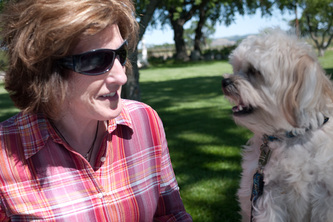
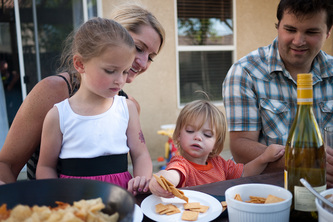
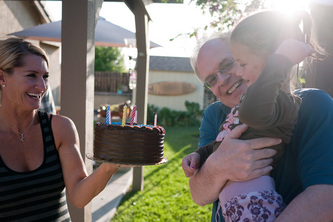
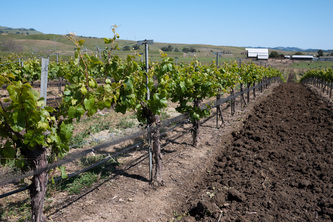
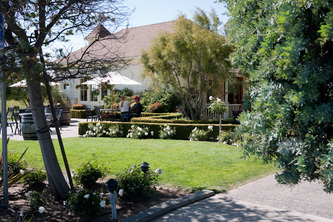
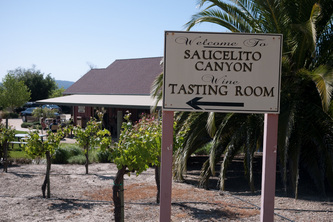
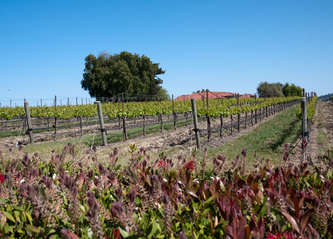
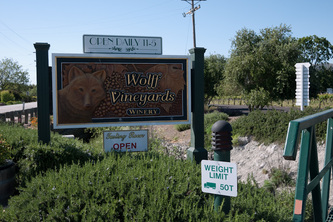
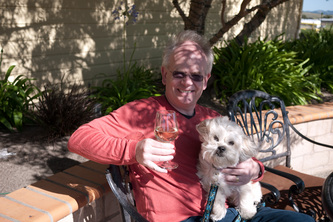

 RSS Feed
RSS Feed
